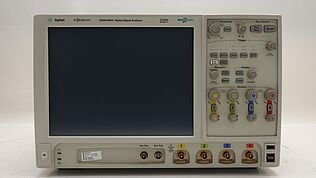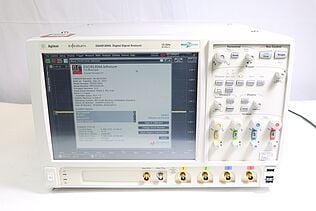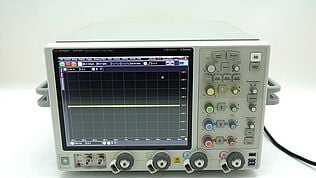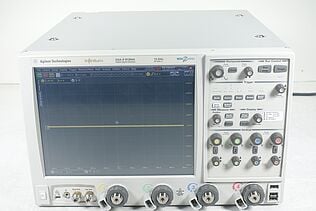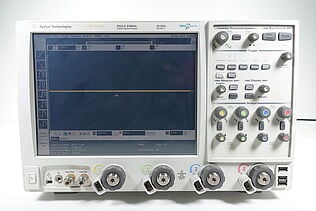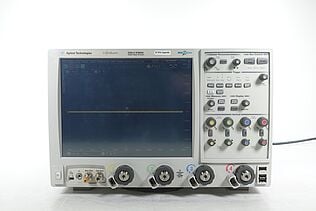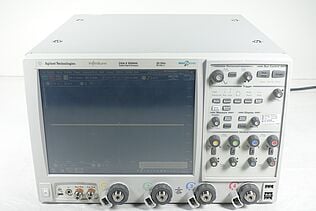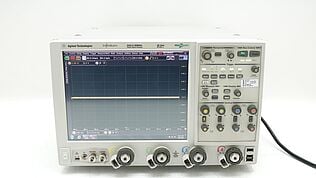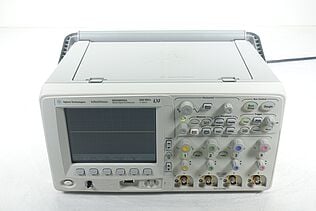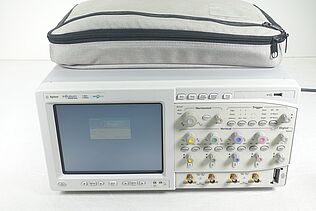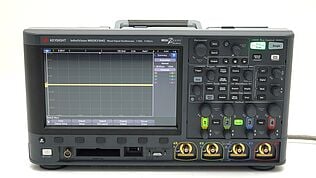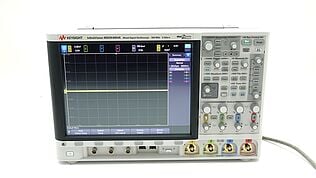- Introduction
- What are Voltage Regulators?
- We Help Engineers Meet Their Deadlines – Browse Our Offers
- How Voltage Regulators Work
- Key Specifications of Voltage Regulators
- Types of Voltage Regulators
- Linear Voltage Regulators
- Switching Voltage Regulators
- Pros and Cons of Using Voltage Regulators
- What to Consider When Using Voltage Regulators
- How to Choose the Right Voltage Regulator
- Applications of Voltage Regulators
- Common Issues with Voltage Regulators and How to Fix Thema
- Testing Voltage Regulators
- Testing Tools
- Fast-Track Your Testing with Our Premium Refurbished Equipment
- Whenever You’re Ready, Here Are 5 Ways We Can Help You
Imagine this: you’ve meticulously designed a circuit, calculated every resistor and capacitor, and soldered each component in place. Yet, when you power it on, the output fluctuates wildly, risking your sensitive electronics. Frustrating, right?
This scenario is all too familiar for engineers striving for precision but grappling with unpredictable voltage variations. Whether you're crafting a power supply for a medical device or ensuring a stable signal in a communication system, the challenge remains the same: maintaining a steady voltage output under fluctuating input or load conditions.
It’s in moments like these that voltage regulators become indispensable. But how do you choose the right one? What should you look for to ensure it meets your expectations and avoids the pitfalls of underperformance?
This guide will answer these questions, diving deep into the world of voltage regulators to help you achieve the stability your designs demand.
What are Voltage Regulators?
Voltage regulators are key players in electronic circuits, keeping the output voltage consistent despite changes in input voltage or load conditions.
By handling variations and preventing voltage spikes or drops, voltage regulators improve performance and longevity and protect sensitive components from potential damage.
They are crucial in power supply circuits, supporting reliable operation in everything from simple gadgets to complex systems. Without them, devices would experience erratic behavior, possibly leading to failures and costly repairs.
Understanding how voltage regulators work is the first step in choosing the right one for your application, ensuring your designs are both robust and dependable.
We Help Engineers Meet Their Deadlines – Browse Our Offers
How Voltage Regulators Work
Voltage regulators control and maintain a constant output voltage by adjusting their internal circuitry to match the required output level, even when input voltage or load conditions fluctuate.
At the heart of most voltage regulators is a feedback loop, a system that continually monitors the output voltage and compares it to a reference voltage. When the output deviates from the set point, the feedback loop signals the regulator to correct the discrepancy, ensuring a stable output.
In linear regulators, this correction is achieved through a series pass element, like a transistor, which acts as a variable resistor. The regulator dissipates excess voltage as heat, making linear regulators simple and quiet, but not very efficient for large voltage drops or high currents.
Switching regulators, on the other hand, achieve voltage regulation by rapidly switching on and off, controlling energy storage elements such as inductors and capacitors to maintain the desired voltage.
This switching action allows them to be more efficient than linear regulators, especially in applications where there’s a significant difference between input and output voltage. They generate higher efficiency and less heat but can introduce electrical noise due to their switching nature.
Understanding these mechanisms helps in selecting the appropriate voltage regulator for your application, balancing efficiency, complexity, and performance.
Key Specifications of Voltage Regulators
When selecting a voltage regulator, several key specifications determine its suitability for your application. Here’s what to consider:
- Input voltage range: The span of voltages a regulator can accept at its input. Ensures that the regulator can handle the highest and lowest voltages it might encounter.
- Output voltage range: The range of voltages the regulator can produce at its output. Determines the versatility of the regulator in providing different output voltages.
- Output current: The maximum current the regulator can supply to the load. Limits the power the regulator can deliver, ensuring it can handle the required current for your application.
- Dropout voltage: The minimum difference between the input voltage and the regulated output voltage for proper regulation. Lower dropout voltage allows the regulator to maintain output voltage even when the input voltage is close to the desired voltage.
- Efficiency: The ratio of output power to input power, expressed as a percentage. Higher efficiency means less power is lost as heat, making the regulator ideal for power-sensitive applications.
- Load regulation: The ability of the regulator to maintain a constant output voltage despite changes in the load. Good load regulation ensures stable performance of the connected devices under varying load conditions.
- Line regulation: The ability of the regulator to maintain a constant output voltage despite variations in the input voltage. Effective line regulation is crucial for maintaining consistent performance, especially in environments with unstable input voltages.
Each of these specifications plays a critical role in how well a voltage regulator will perform in your specific application. Carefully evaluating these parameters ensures that you choose a regulator that meets your design requirements, leading to reliable and efficient circuit operation.
Types of Voltage Regulators
Voltage regulators are essential for providing stable voltage in electronic circuits, and they come in two primary types: linear and switching. Each type has distinct mechanisms and advantages suited to different applications.
Linear Voltage Regulators
Linear voltage regulators operate by dissipating excess power as heat to maintain a steady output voltage. They use a transistor in series with the load (series regulator) or a transistor shunting excess current to ground (shunt regulator).
- Series regulators: Control output voltage by varying the resistance in series with the load. The excess voltage is dropped across the transistor, and the regulator acts as a variable resistor.
- Shunt regulators: Divert excess current to ground, maintaining output voltage by adjusting the current shunted away from the load.
Pros
- Simplicity: Easy to design and use with minimal external components.
- Low noise: Provide clean, noise-free output suitable for sensitive analog circuits.
- Fast response: Quick to react to changes in load.
Cons
- Efficiency: Low efficiency, especially when the difference between input and output voltage is significant, as excess power is dissipated as heat.
- Heat generation: Requires adequate heat sinking to manage thermal dissipation.
Switching Voltage Regulators
Switching voltage regulators work by using high-frequency switching and energy storage elements like inductors and capacitors to regulate voltage. They convert the input voltage to the desired output voltage by rapidly switching on and off, controlling energy transfer in the circuit.
| Type | Function | Common Applications |
| Buck Converter | Steps down voltage | Power supplies for digital circuits |
| Boost Converter | Steps up voltage | Battery-powered devices needing higher voltage |
| Buck-Boost Converter | Steps up or down voltage | Systems requiring flexible voltage levels |
| Inverter | Converts DC to AC | Motor drives, AC power supplies |
Pros
- Higher efficiency: Converts energy more efficiently, reducing power loss as heat.
- Versatility: Can handle a wider range of input and output voltages.
- Size and weight: Generally smaller and lighter due to reduced heat sinking needs.
Cons
- Complexity: More complex design and requires additional external components.
- Potential noise: Can introduce electrical noise due to high-frequency switching, requiring filtering in sensitive applications.
Understanding the differences between linear and switching regulators helps in selecting the appropriate type for your specific needs, balancing factors like efficiency, complexity, and thermal management.

Pros and Cons of Using Voltage Regulators
Voltage regulators play a critical role in electronic systems by ensuring stable output voltage, which is essential for protecting components and improving overall system performance. However, they also come with certain drawbacks that need to be considered.
Pros
- Stable output voltage: Voltage regulators maintain a constant output voltage despite variations in input voltage or load conditions. This stability is crucial for the reliable operation of sensitive electronic devices.
- Protection of components: By preventing voltage spikes and drops, regulators protect electronic components from damage, increasing their lifespan and reducing the risk of system failures.
- Improved system performance: Stable voltage ensures that all components operate within their specified voltage ranges, leading to better performance and reliability of the entire system.
- Versatility: Different types of regulators (linear and switching) offer solutions for a wide range of applications, from simple to complex power management needs.
- Efficiency (switching regulators): Switching regulators are highly efficient, minimizing power loss and heat generation, making them suitable for power-sensitive and battery-operated applications.
Cons
- Cost: Voltage regulators, especially switching types, can add to the overall cost of the system due to their complexity and the need for additional components.
- Complexity: Switching regulators require more complex design and circuitry compared to linear regulators, which can increase development time and potential for design errors.
- Power loss (linear regulators): Linear regulators dissipate excess energy as heat, leading to lower efficiency, especially in applications with significant voltage differences between input and output.
- Size and heat management: Linear regulators often require heat sinks to manage thermal dissipation, which can increase the size and weight of the final design.
- Noise (switching regulators): Switching regulators can introduce electrical noise into the circuit, potentially affecting the performance of sensitive analog components.
Alternatives to Using Voltage Regulators
- Zener diodes: For simple voltage regulation in low-power applications, zener diodes can provide a basic method of voltage stabilization.
- DC-DC converters: For applications requiring high efficiency and flexibility, DC-DC converters can be used instead of traditional regulators.
- Power conditioning units: For complex systems, integrated power conditioning units can offer advanced regulation and filtering solutions.
- Transformers with rectifiers: In AC-DC applications, transformers combined with rectifiers and filtering capacitors can provide basic voltage regulation without the need for active regulators.
Each alternative has its own set of advantages and trade-offs, making them suitable for specific scenarios where traditional voltage regulators might not be the best fit.
What to Consider When Using Voltage Regulators
When integrating voltage regulators into your designs, consider these key factors to ensure optimal performance and reliability:
- Heat dissipation: Managing heat dissipation is crucial, particularly in linear regulators, which dissipate excess input voltage as heat. Without adequate heat management, the regulator can overheat, leading to thermal shutdown or damage. Ensure the regulator has appropriate heat sinking or cooling methods, such as heatsinks or fans, and verify sufficient airflow around the component to improve cooling and minimize thermal buildup.
- Efficiency: The efficiency of a voltage regulator affects power consumption and heat generation. High-efficiency regulators deliver more power to the load and reduce energy waste as heat. In power-sensitive applications, such as battery-operated devices, switching regulators are preferred for their superior efficiency compared to linear regulators, especially when there’s a significant difference between input and output voltage.
- Noise and ripple minimization: Switching regulators can introduce electrical noise and ripple into the output, potentially affecting the performance of sensitive circuits. To minimize noise, use proper filtering techniques like adding capacitors and inductors to smooth out voltage fluctuations. Careful PCB layout and shielding can also reduce electromagnetic interference and maintain signal integrity.
- Stable output under varying conditions: Choose regulators with good load and line regulation specifications to ensure consistent voltage delivery even when the input voltage fluctuates or the load changes rapidly.
- Response time: The speed at which a regulator responds to changes in load or input voltage impacts its ability to maintain stable output. Fast transient response is critical in applications where the load varies quickly. Evaluate the regulator’s transient response time to ensure it can quickly adapt to changes and maintain voltage stability, preventing dips or overshoots that could disrupt the system.
By considering these factors, you can select and implement voltage regulators that meet the specific demands of your applications, ensuring efficient, stable, and reliable operation.
How to Choose the Right Voltage Regulator
There are a few things you should consider when selecting a voltage regulator for your application.
- Determine your application needs
- Input/output voltage requirements: Identify the range of input voltages your circuit will encounter and the exact output voltage required for your components. Ensure the regulator can handle the minimum and maximum input voltages and provide the necessary output voltage.
- Current requirements: Assess the maximum current your load will draw. Choose a regulator that can supply this current without overheating or triggering overcurrent protection.
- Compare regulator specifications
- Efficiency: Compare the efficiency ratings of different regulators. For battery-operated or power-sensitive applications, switching regulators are typically more efficient than linear regulators.
- Dropout voltage: For linear regulators, ensure the dropout voltage is low enough to maintain regulation under your input conditions. For switching regulators, check the input voltage range against your expected input.
- Load and line regulation: Review how well the regulator maintains output voltage despite changes in load (load regulation) or input voltage (line regulation). Good regulation is crucial for stable operation.
- Consider operating conditions
- Temperature: Determine the operating temperature range of your application. Ensure the regulator can perform reliably across this range without derating or failing. Look for regulators with appropriate thermal management features.
- Space constraints: Evaluate the physical space available in your design. Switching regulators generally require more components, while linear regulators can be more compact but may need additional space for heatsinks if heat dissipation is a concern.
- Consult datasheets and application notes
- Datasheets: Always consult the manufacturer's datasheets for detailed specifications, typical performance curves, and recommended usage scenarios. Datasheets provide critical information on maximum ratings, efficiency, and thermal performance.
- Application notes: Read application notes for insights into best practices, design considerations, and real-world performance tips. These documents often contain valuable information on optimizing regulator performance in specific applications.
Applications of Voltage Regulators
Voltage regulators ensure stable voltage for consistent performance in electronic systems. Here are some common applications:
- Smartphones and tablets: Voltage regulators manage the power supplied to key components like processors, memory, and display screens, maintaining stable voltage despite fluctuations from the battery. This stability extends battery life and ensures optimal device performance.
- Laptops and computers: They regulate voltage for CPUs, GPUs, and other peripherals, handling fluctuations from power adapters or batteries. By maintaining consistent voltage levels, regulators improve system stability, performance, and reliability.
- Televisions and home electronics: Voltage regulators provide stable power to delicate circuits in devices like TVs and audio equipment. They ensure consistent performance and protect components from voltage spikes and noise. They contribute to better picture quality and sound by delivering clean and stable power.
- Vehicle electronics and battery management systems: In automotive applications, regulators stabilize voltage for various systems, including infotainment, engine control units (ECUs), and sensors. They also manage power distribution in battery management systems, balancing cell voltages and protecting against overcharging or deep discharging.
- Industrial automation and control systems: Voltage regulators ensure reliable power for sensors, actuators, and control circuits in industrial automation. Stable voltage is critical for accurate measurements, reliable control signals, and smooth operation of automated machinery and robotics.
- Networking equipment and communication devices: Regulators provide stable voltage for routers, modems, and communication devices, which is essential for maintaining data integrity and preventing disruptions caused by power fluctuations. They improve network connectivity and ensure reliable data transmission in networking equipment.
In each of these applications, voltage regulators play a pivotal role in maintaining device functionality, protecting sensitive components, and improving overall performance by providing a consistent and reliable power supply.
Common Issues with Voltage Regulators and How to Fix Thema
Voltage regulators, while essential for stable power, can encounter some issues. Here's a guide to diagnosing, resolving, and preventing these problems.
| Common Issue | Description | Fix | Prevention |
| Overheating | Regulators, especially linear ones, can overheat due to inadequate heat dissipation, leading to thermal shutdown or damage. | Ensure proper heat sinking and ventilation. Use heatsinks, thermal pads, or fans to manage heat. Consider using switching regulators for higher efficiency and lower heat generation. | Ensure proper heat sinking and ventilation. Use heatsinks, thermal pads, or fans to manage heat. Consider using switching regulators for higher efficiency and lower heat generation. |
| Noise and Ripple | Switching regulators can introduce noise and ripple into the output, affecting sensitive circuits. | Add decoupling capacitors and filters to smooth out voltage fluctuations. Implement proper PCB layout and shielding to minimize electromagnetic interference. | Use low-noise components and follow best practices for PCB layout to reduce noise generation. Test and validate the design for acceptable noise levels. |
| Instability | Instability in the output voltage can result from poor regulation or inappropriate component selection. | Check the feedback loop and compensation network. Ensure correct values for resistors and capacitors. Use regulators with good load and line regulation specifications. | Test the regulator under various load conditions to ensure stable performance. Validate the design with real-world scenarios to avoid instability. |
| Inefficiency | Linear regulators can be inefficient, especially when the difference between input and output voltage is large, resulting in excessive power loss as heat. | Opt for switching regulators in applications where efficiency is crucial. Evaluate the regulator's efficiency in your specific use case. | Choose the right type of regulator for your application, considering input and output voltage requirements and efficiency needs. |
Testing Voltage Regulators
Testing voltage regulators involves evaluating key parameters such as dropout voltage, ripple, transient response, and efficiency. These parameters ensure that the regulator performs reliably under all operating conditions.
- Dropout voltage: Measures the minimum difference between input and output voltage at which the regulator can maintain regulation.
- Ripple: Assesses the small, unwanted residual periodic variation in the DC output voltage, which can affect sensitive electronics.
- Transient response: Evaluates how quickly the regulator can respond to changes in load or input voltage.
- Efficiency: Determines the ratio of output power to input power, indicating how much power is lost as heat.
Testing Tools
- Oscilloscopes: Essential for measuring ripple, noise, and transient response.
- Multimeters: Useful for measuring steady-state voltage and current.
- Signal Generators: Simulate varying input conditions to test regulator stability.
- Network Analyzers: Analyze the frequency response of the feedback loop to assess stability and performance.
Choosing premium refurbished testing equipment from Keysight offers high-quality performance at a lower cost. These tools undergo rigorous refurbishment processes, ensuring they meet high standards of accuracy and reliability.
Opting for refurbished equipment can provide access to advanced testing capabilities while optimizing budget constraints, making it a practical choice for thorough and reliable voltage regulator testing.

Fast-Track Your Testing with Our Premium Refurbished Equipment
Struggling with overheating, noise, or instability in your voltage regulators? Resolve these issues with our premium refurbished testing equipment from Keysight.
Our high-quality oscilloscopes, multimeters, signal generators, and network analyzers provide accurate measurements to diagnose and fix common voltage regulation problems.
Avoid the high cost and lengthy procurement times of new equipment. Get reliable performance and advanced testing capabilities without breaking your budget.
Get the tools you need to ensure stable and efficient voltage regulation today.
Select up to 3 instruments to compare
Enable Notifications
In order to use this feature, you need to enable notifications.
Manage notification preferences
Whenever You’re Ready, Here Are 5 Ways We Can Help You
- Browse our premium used network analyzers, oscilloscopes, signal analyzers and waveform generators.
- Call tech support US: 1 800 829-4444
Press #, then 2. Hours: 7am – 5pm MT, Mon– Fri - Talk to our sales support team by clicking the icon (bottom right corner) on every offer page
- Create an account to get price alerts and access to exclusive waitlists.
- Talk to your account manager about your specific needs











